Danish Navy Diving Service
During a trip to Scandinavia, walking in Copenhagen along the Larsens Plads embankment, I saw several warships and of course could not pass by. As it turned out - this is an open day held by the diving service of the Royal Danish Navy (Søværnets Dykkertjeneste).
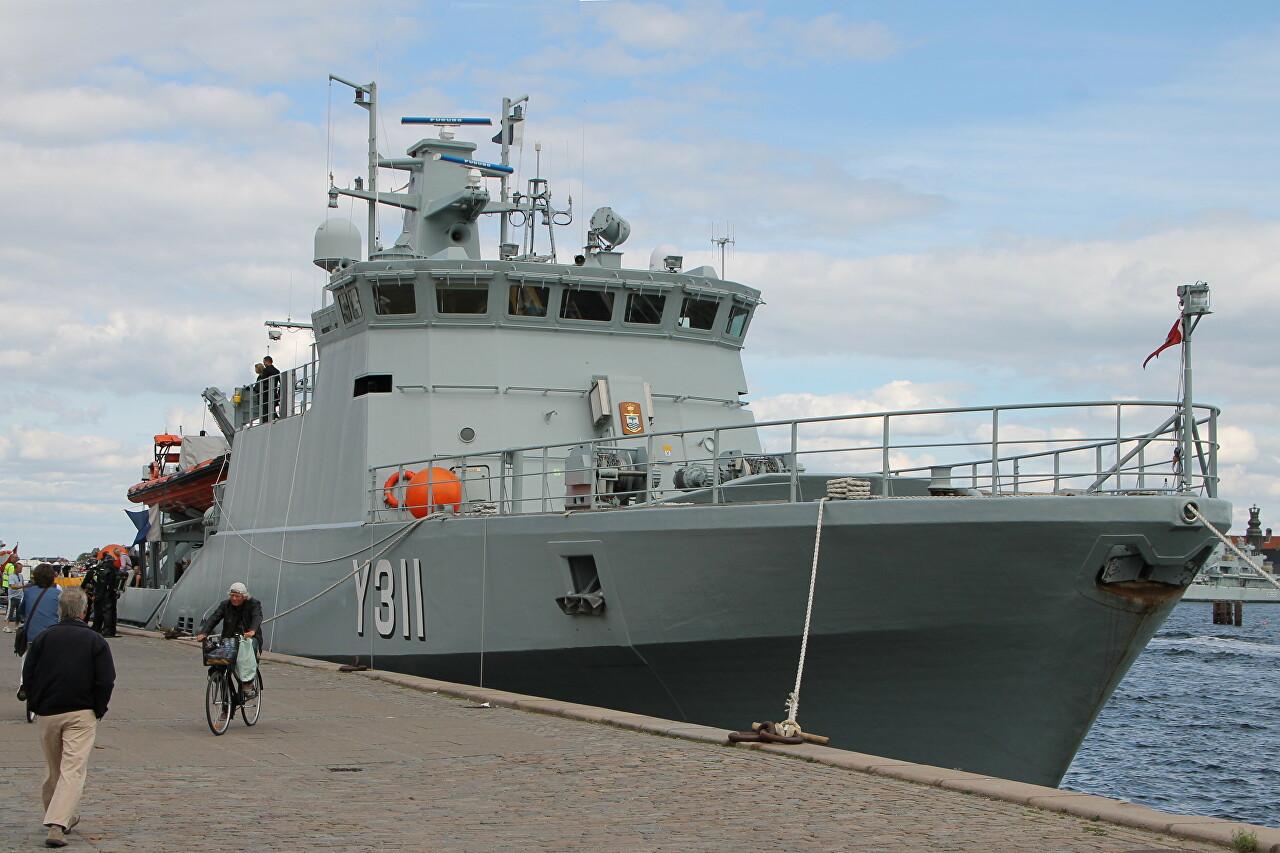
In addition to showing modern equipment and equipment, the exhibition has another goal - to attract young people to the service, offering them a professional career in the navy.
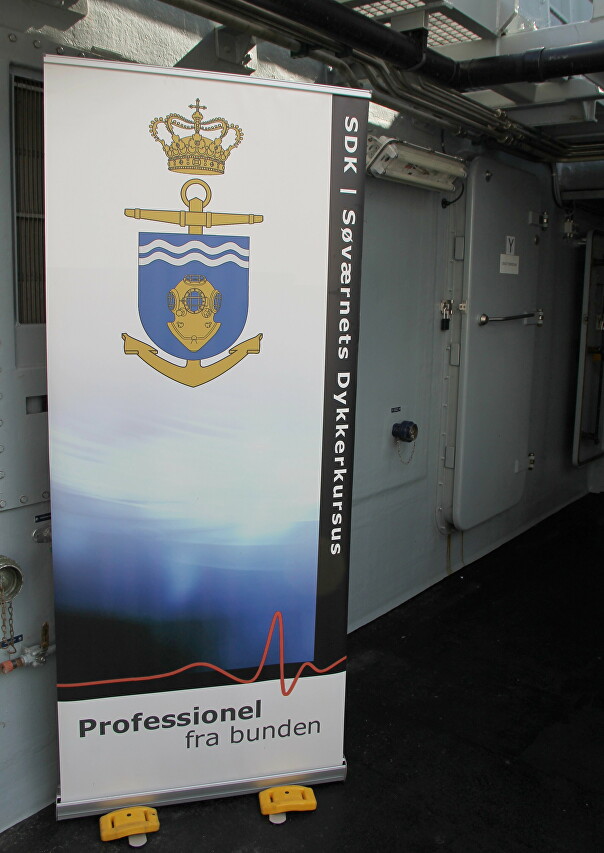
The need to maintain the underwater part of the ship's hulls existed from the very beginning of the appearance of swimming facilities, at first it was decided to pull the ship ashore, then roll, later dry docks were built for this purpose. However, it was not always possible to use such methods, or they were too expensive, so attempts have long been made to create equipment with which a person could stay under water for a long time.
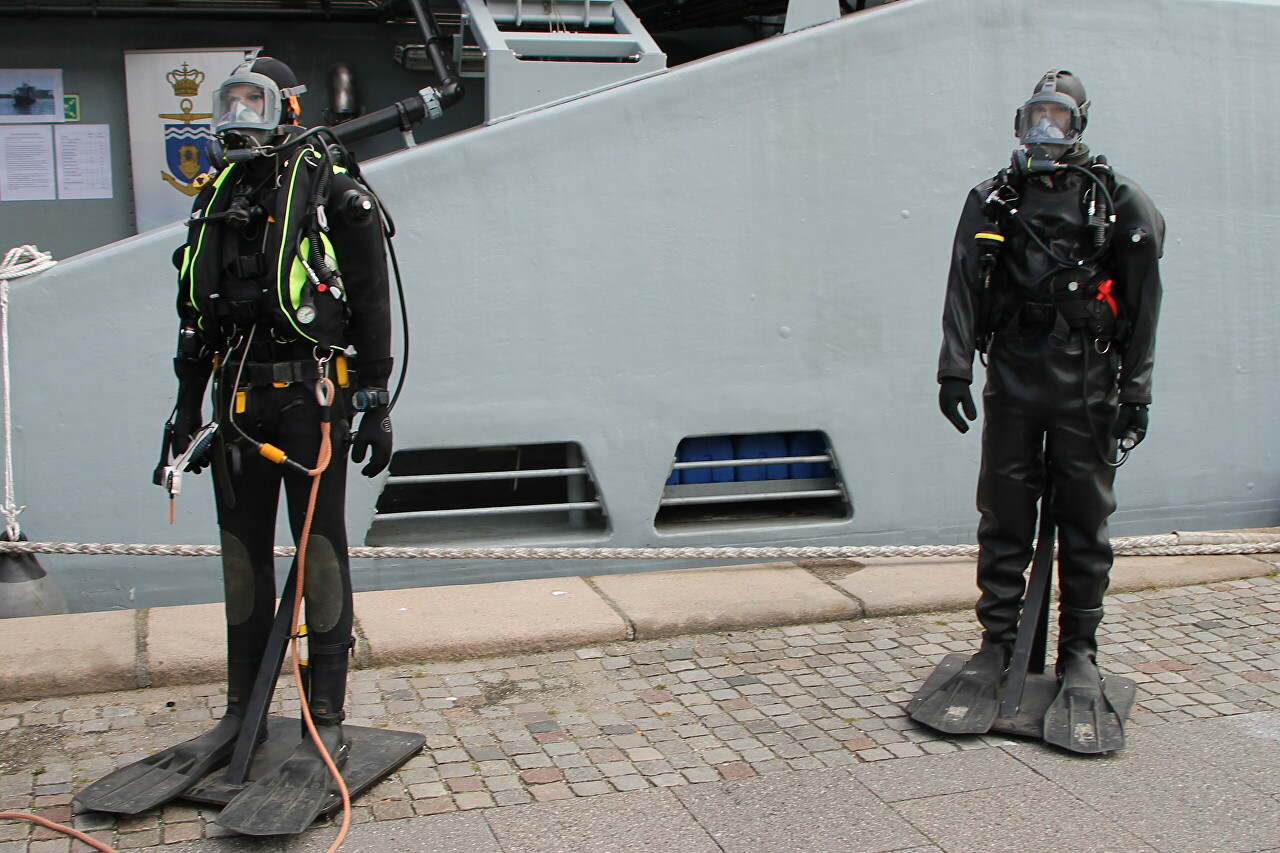
On most Navy ships, divers are part of the crew, their tasks include inspection and maintenance of the ship's hull below the waterline, propellers and steering gear, but most often they have to cut the ropes and nets that are wound on the propeller in areas of intensive fishing. These specialists are trained by the diving school (Søværnets Dykkerskoles). Now the school has 304 cadets in 50 specialties. Graduates of the school have the skills of underwater work at a depth of up to 60 meters.
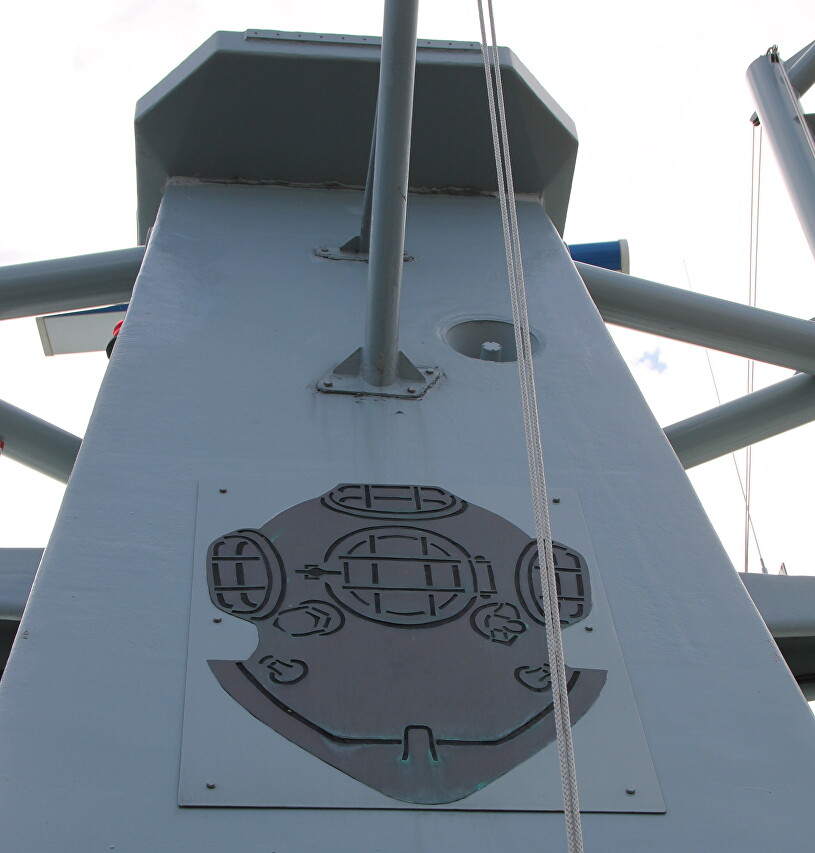
At a small stand, you can get acquainted with the history of diving in Denmark. In the documents of the Danish navy, the first mention of such works is dated 1667. In 1847, a special unit was organized at the naval shipyard for underwater work, for which equipment was purchased in England. Mastering was not easy, accidents were not uncommon, the accumulated experience was passed from experienced divers to young ones without a system, and the quality of training was very uneven.
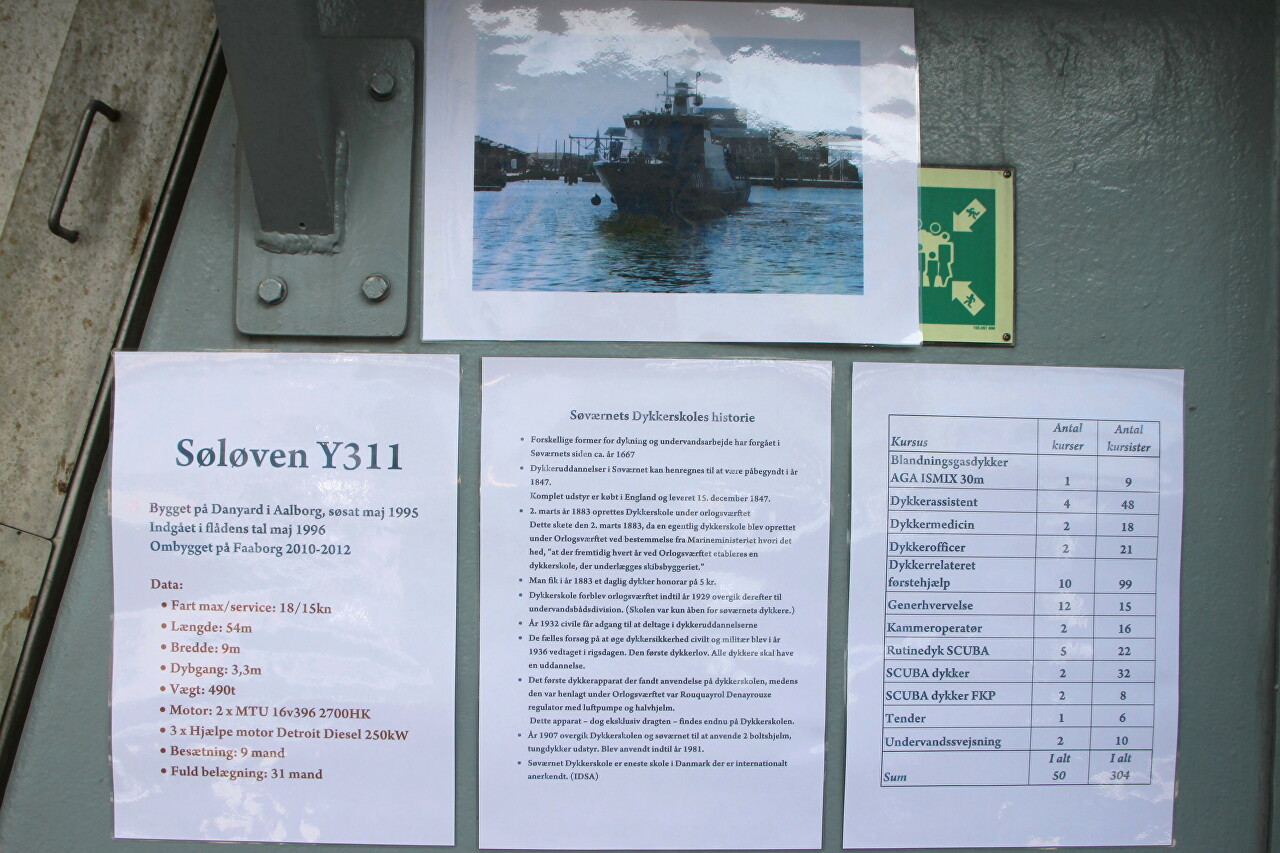
On March 2, 1883, by order of the Ministry of the Navy, a Diving School was established at the Holmen Shipyard and regulations were developed for divers, including a fee of 5 Danish Krone per dive. In 1929, the training of divers was transferred to the submarine division, and in 1932, the school opened diving courses for civilians. In 1936, the Rigsdag passed a law that all divers must have special training and have the appropriate certificates. In 1955, 4 specialists of the Diving School were trained in the special SEAL unit of the US Navy, in 1957, the Frømandskorpset (Frog Corps) unit appeared in the Danish Navy, designed for sabotage and fighting terrorists.

In addition to training military and civilian underwater swimmers, the diving service performs another important function: the search and disposal of ammunition left in Danish waters since the Second World War. According to experts, the Baltic Sea and the North Sea are even now about 4-6 thousand sea mines, and the number of unexploded bombs and shells does not lend itself to any accounting at all. Specialists of the service ensure the safety of marine construction works, in particular, they carefully examined the construction line of the Ehresund Bridge and neutralized many dangerous objects found at the bottom of the strait. In addition, Danish divers constantly monitor the dump of barrels of mustard gas, flooded by the Soviet Union off the island of Bronholm after the Second World War.
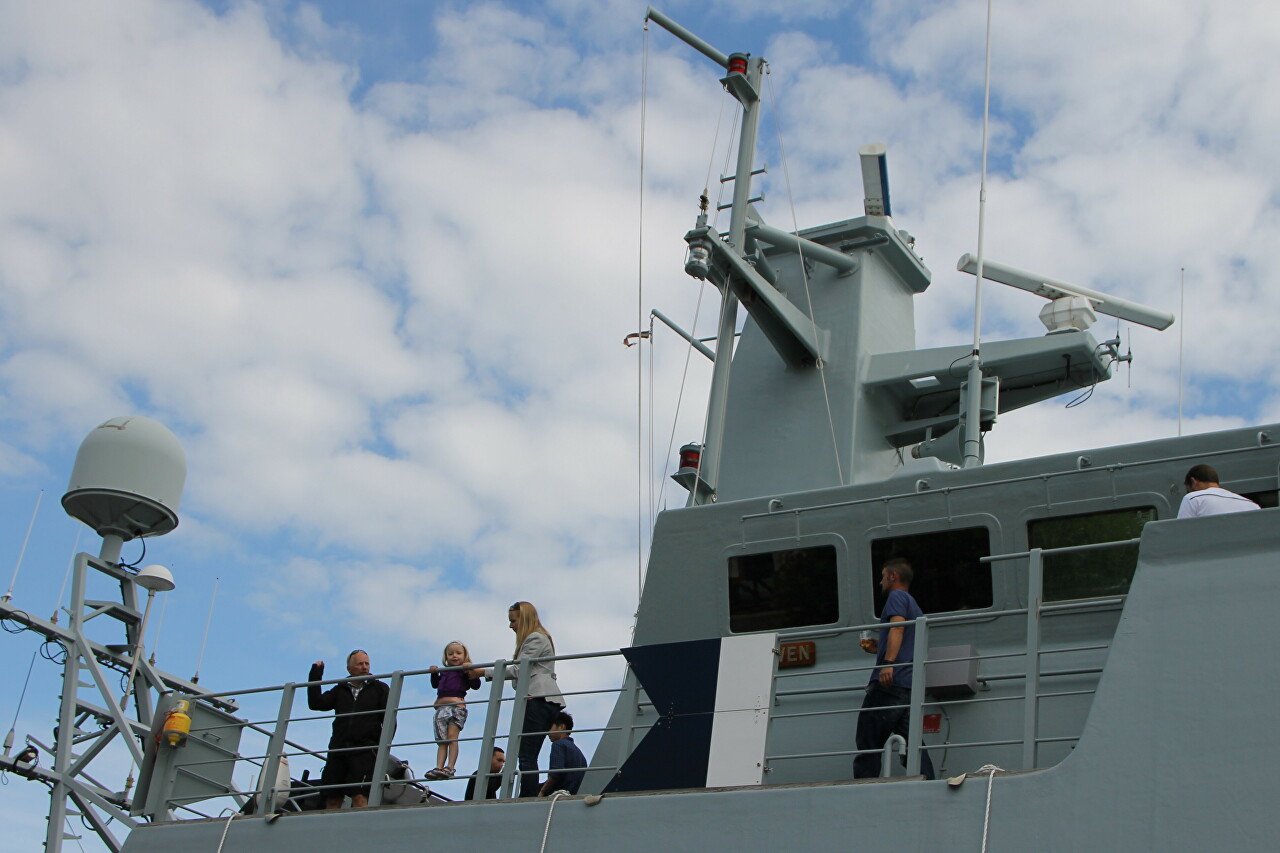
In the next article, we will go on board the training diving ship Søløven and get acquainted with its interior